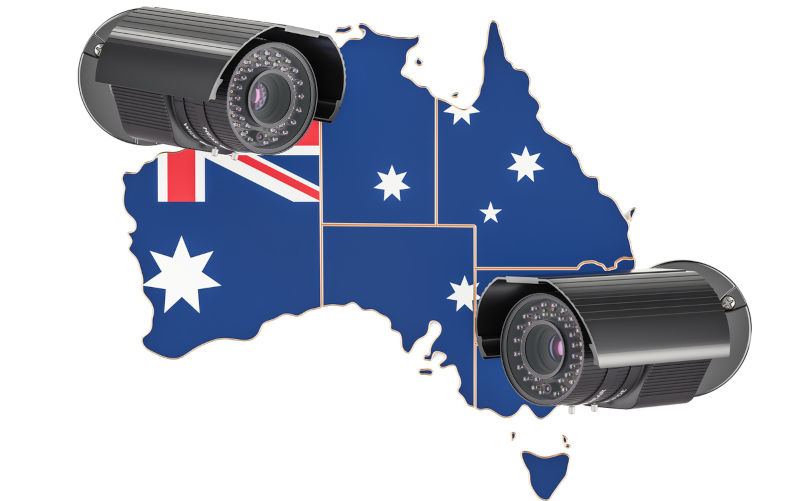Monday mornings in Court Seven, Southport Magistrate’s Court on Queensland’s Gold Coast, is where the rubber hits the road for the local traffic-offence recalcitrant.
A visitor with any historical memory might find some faint irony in the Court’s location in Hinze Street, which is considered the legal district of Southport. Russ Hinze served as Queensland Minister for Main Roads and Minister for Police in a long career often described as “colourful”, but died before eight charges of corruption he was facing could be brought to court.
Today, re-offending, failing to pay fines on time, seeking hardship mitigation – or occasionally even trying it on with a “Not Guilty” plea – are all grist for the mill of the no-nonsense magistrates and also for the steely-eyed young prosecutors from the Queensland Department of Transport and Main Roads.
During 2024, an increase in the numbers of those seeking to plead “not guilty” to charges of “not wearing a seat belt correctly”, following detection by new camera technology, meant for a time that a magistrate in Court Seven would provide an introductory preamble pointing out:
- laws of evidence have been changed regarding these types of offences…. these charges follow detection by cameras based on new automated technology that is very reliable and saves scarce resources (eg having to have a police officer show up to testify in court)…
- the presumption at law is that everything in the photo is evidence of what happened. . .
- devices are calibrated and in proper working order…
This is a clear message to those who are charged that the matter will be brought to swift, and almost certainly a less expensive conclusion if the charge is accepted and the fine paid (currently $1209 plus court costs). Indeed, if anyone would like to challenge the ‘accuracy’ of the cameras that produced the image, they must inform the prosecution by filling out an ‘intention to challenge or dispute’ form in advance of any court appearance. Challengers are then informed that fighting the charge in this way would also risk additional costs of $8000 to $12,000 to bring to Queensland technical experts from Acusensus, the Melbourne company who ‘run’ the camera infringement system to justify the charge based on the photo.
Understandably, this disincentive to challenge has greatly reduced the numbers turning up in court, but not the number of disgruntled offenders.
So what’s the beef? If you do the crime, surely you should be prepared to do the time? Whatever happened to “it’s a fair cop gov.”?
The reason many of those caught by these cameras are disgruntled is because they claim they were wearing their seat belts, and they were wearing them correctly – that is, over the shoulder. Unfortunately, many of the infringement images are so blurry, fuzzy and indistinct that it is impossible to see the seat belt at all, let alone that it was being worn correctly or incorrectly. Where we (literally) enter a grey area is with the use of this AI based technology (originally developed to detect driver mobile phone use) and now used to also capture seatbelt infringements by passengers. With the cameras focussed on the driver, details on the passenger side are often unclear, especially in conditions of over- illumination from bright Queensland sunshine.
What does the Queensland Government say about this? The Government website explains that the “cameras use artificial intelligence (AI) software to filter images and detect possible … failure to wear a seatbelt by the driver and front seat passenger. If AI suspects a possible offence, the image is passed on to Queensland Revenue Office. An authorised officer will review the image to determine if an offence has been committed.”
A cynic might wonder if an “authorised officer” based in the “Queensland Revenue Office” might have an inadvertent bias towards a decision that fell on the side of raising additional revenue.
While the Queensland Government insists that this is all about road safety and saving lives, there are other elements that might feed a cynical view. These include:
- The size of the fines in Queensland relative to other states for the same offence ($1209 and 4 demerit points compared to $410 and 3 demerits in NSW).
- That the fine falls solely on the driver (or registered owner) of the vehicle regardless of who is unbelted. If the fine is designed to be a behaviour change strategy, is there evidence to suggest the passenger will change their behaviour if the driver cops the fine?
- The driver is responsible at all times for ensuring that all passengers remain ‘correctly’ belted (including those in the back seat) – even while driving at 110KPH on the Gold Coast Motorway or Western Freeway where the most ‘lucrative’ cameras are based.
- And finally, the “authorised officer” who reviews the image does so with the assistance of “business rules” which are not available to the public. A super cynic might suspect that where the image is unclear, these “business rules” err on the side of issuing a fine.
Recently Southport’s Court Seven hosted three hold-out alleged offenders who disputed the charges. Their fate could serve as a warning to cop it sweet and pay up.
The first offender decided to change their plea to guilty before the hearing took place. (An additional recent traffic offence and a reminder of the possible additional costs of the Acusensus reports probably prompted this). The second and third took the stand supported by considerable amounts of evidence to support their cases. (This evidence, which included statutory declarations from the offending passengers that they were wearing the belts correctly, and carefully prepared ‘defence’ statements – was deemed inadmissible). Despite sworn testimony to support the passenger assertions and arguments and evidence for an alternative interpretation of the fuzzy photos (that seat belts were actually being worn correctly) the magistrate was satisfied the photos showed seat belts being worn under the arm, and both were found guilty.
Failing to wear a seat belt (correctly) unarguably greatly increases the chances of serious injury or death in a road accident. But what works best in encouraging compliance?
In Victoria, notices of detection for exceeding the speed limit are often accompanied by a letter stating that, as a consequence of a long period of offence free driving, the fine has been waived. This might encourage those who have this ‘narrow escape’ to pay more attention to speed limits in future. In Victoria (and NSW) seatbelt offences attract much lower fines than in Queensland. Which approach works best?
If the question relates to how much revenue the approach raises, Queensland obviously wins hands down – for now.
But if the aim is to reduce road fatalities, the statistics are hardly compelling: with four fifths of Victoria’s population, Queensland has had more fatalities than Victoria each year since 2020. (Source: www.statista.com )
Back in Court Seven, to be fair to the magistrates and prosecutors, there does seem to be a willingness to make allowances for hardship cases, and to allow some leeway to convicted drivers who have a pressing need to keep driving if the seatbelt conviction has pushed them over the demerit limit.
But should it ever get this far on the basis of what you can’t actually see? And what is the real cost to Queensland of building a swelling number of resentful citizens with no way to express their frustration?
Perhaps the upcoming election outcome might provide an outlet?
Gary Moorhead Currently Director of Public Relations at the Sunlands Company, a long duration energy storage developer. Previously a consultant to the St Baker Energy Innovation Fund (Sep 2019 – March 2020); Chief of Staff to Senator Kim Carr (Shadow Minister/Minister for Innovation, Industry Science and Research 2017-2019; 2009 – 2013). Other experience includes senior executive roles at Professionals Australia, in the Commonwealth Department of Human Services and CEO of Sports Medicine Australia.

